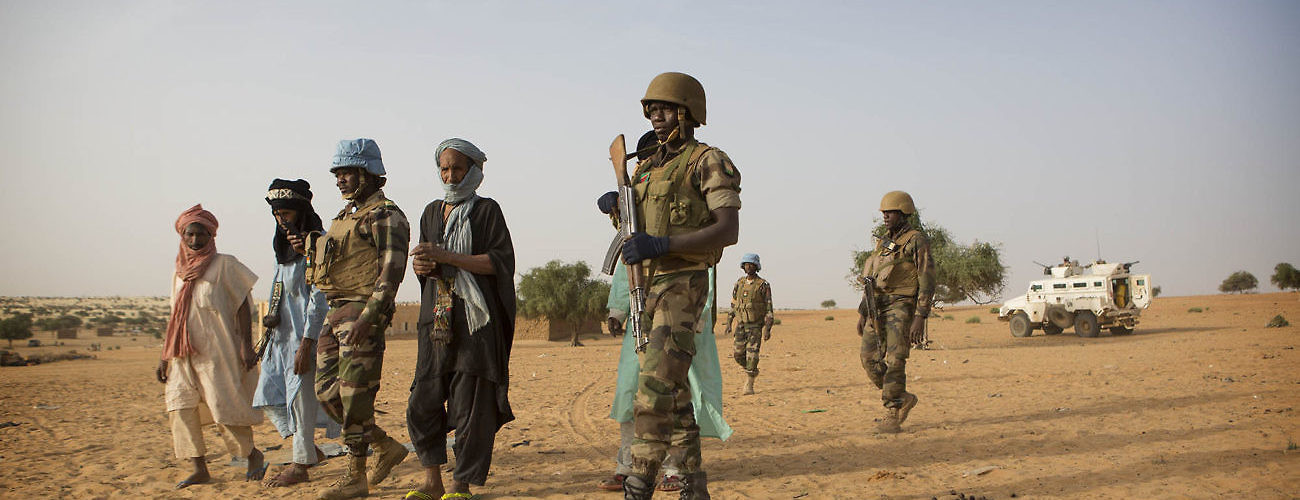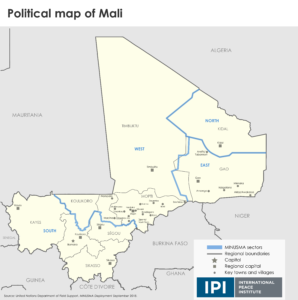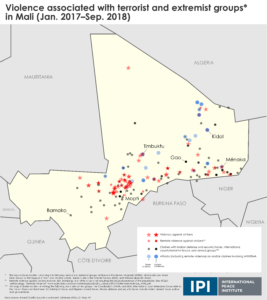MINUSMA’s Nigerian contingent secures and assists a health assessment operation near the border with Niger to detect possible cases of Rift Valley Fever, Tamalet, Mali, October 29, 2016. Sylvain Liechti/MINUSMA.
In the non-permissive environments where they are often deployed, UN peace operations need to be increasingly creative to implement their mandate to protect civilians. They face particularly acute challenges in contexts marked by violent extremism, such as Mali, where attacks by terrorist groups have greatly constrained the capacity of peacekeepers to protect local populations.
This paper explores the operational challenges that the UN Multidimensional Integrated Stabilization Mission in Mali (MINUSMA) faces in implementing its protection mandate. It analyzes protection threats related to violent extremism in Mali and explores the protection strategy, tools, and activities developed by the UN mission to address those threats. It highlights some of the practical constraints of operating in a hostile environment and added complications related to the mission’s proximity to non-UN counterterrorism forces.
The Malian case demonstrates that each peacekeeping theater needs to be its own laboratory for POC and that approaches, tools, and mechanisms are not directly replicable from one UN mission to another. The report makes three recommendations to improve the delivery of MINUSMA’s protection mandate:
- Explore the full spectrum of military, police, and civilian tools;
- Ensure the independence of MINUSMA’s POC activities from counterterrorism agendas; and
- Design and articulate a political strategy that prioritizes POC.












